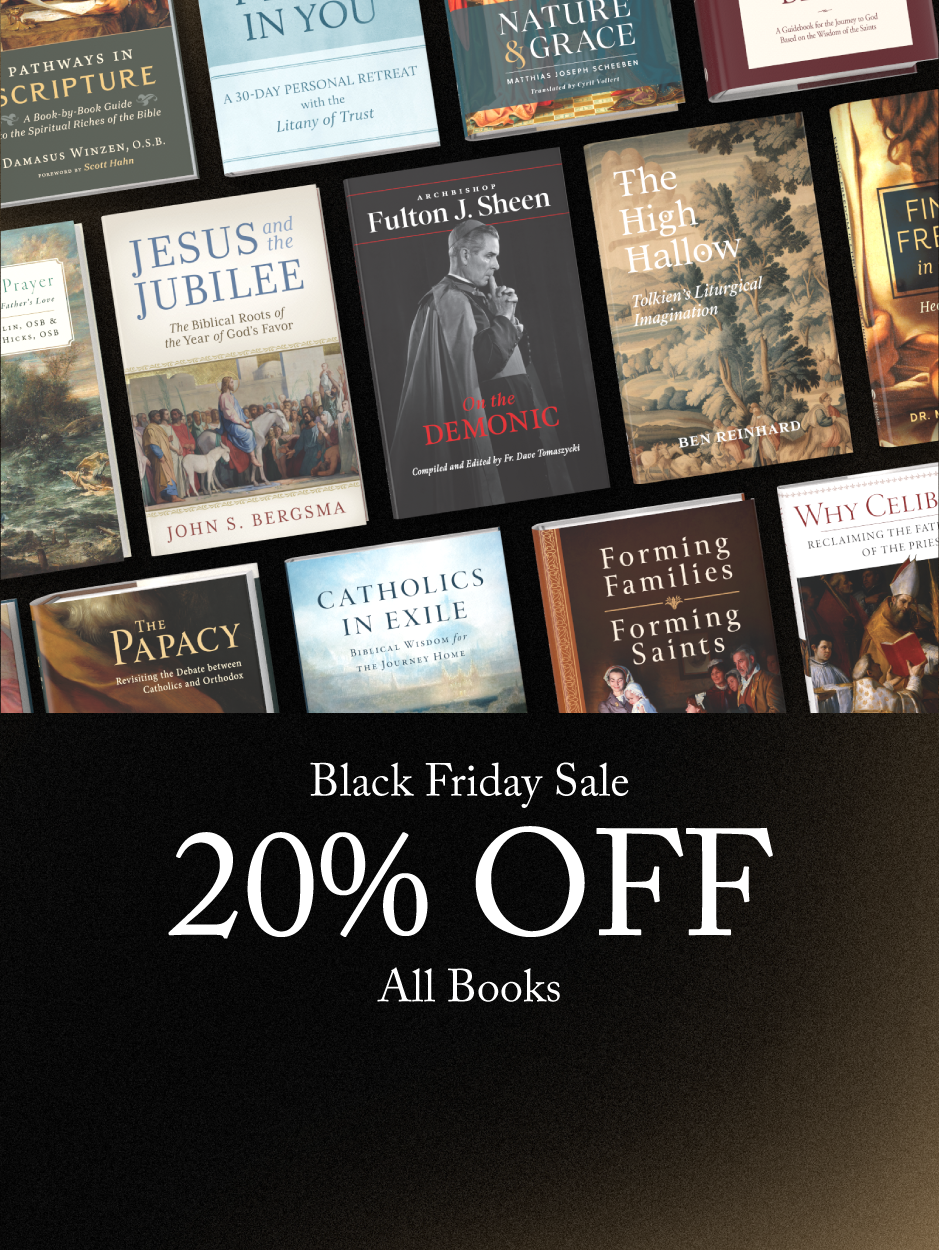
Lesson Objectives
- To read Genesis 1-3 with understanding.
- To learn God’s “original intent” in creating man and woman.
- To understand the sin of Adam and Eve and understand God’s promise of a New Adam and a New Eve.
V. The Second Coming of Adam and Eve
But even as His children have exiled themselves from paradise through sin, God promises them redemption, a homecoming.
He promises that throughout human history there will be an "enmity" between the serpent, Satan, and the woman, "the mother of all the living," and between their offspring (see Genesis 3:15, 20).
The early Fathers of the Church called this the "First Gospel" (Proto-Evangelium).
God was promising, here in the first pages of the Bible, a new Adam and a new Eve, to undo the damage done by the first couple.
St. Paul called Jesus the "last Adam" or the New Adam (see 1 Corinthians 15:21-22, 45-49; Romans 5:14). And the tradition of the Church has always seen Mary as the "new Eve" (see Catechism, nos. 410-411). ;
As Adam called Eve "woman," we see Jesus call Mary "woman" (compare Genesis 2:23and John 2:4).
As Eve disregarded God’s commands, Mary offers herself freely to the will of God and says "Do whatever He tells you" (see Luke 1:38; John 2:5).
Finally, as Eve was the "mother of all the living," Mary is given by Jesus to be mother of the people of God (compare Genesis 3:20 and John 19:26 and Revelation 12:17).
Jesus enters the world as the new Adam - the One who does what Adam was supposed to do.
He comes, not to do His own will, but the will of the Father who sent Him. He comes to serve and to offer His life as a ransom for many (see Mark 10:45; John 15:13).
Jesus enters a garden and experiences the curses of Adam - the dread of death, falling to the dirt, sweating blood from his face in His agony (compare Genesis 3:17-19 and Matthew 26:36-46; Luke 22:44).
He is crowned in thorns and stripped naked (see Matthew 27:29, 31). And He is led to a "tree," the Cross - which the early Church saw as a symbol of the Tree of Life in the Garden (see Acts 5:30; Galatians 3:13; 1 Peter 2:24).
Yet on the Cross He was obedient, saying to God in prayer: "Not as I will, but as You will" (see Matthew 26:39).
He does not grasp at "equality with God" as Adam did (see Philippians 2:5-11), but lays down His own life in sacrifice for the sake of the "garden" - the world, for His bride, the Church.
Adam’s bride Eve was created from his side while he slept. The Church, the bride of Christ, was born from His side, which was opened by the soldier’s lance while he slept in death on the cross. His side issued forth blood and water, symbols of baptism and the Eucharist (seeGenesis 2:21-22; John 19:34; Catechism, nos.766; 1067).
Finally, the resurrected Jesus appears in a garden ("in the place where he had been crucified") to a "woman" and is mistaken as a "gardener" - perhaps a reference to Adam’s task to be keeper of the garden of paradise (see John 19:41; 20:14-18).
All this God promises in the "first gospel."
Other Lessons
- Lesson One: How a Catholic Starts to Read the Bible
- To learn how to read the Bible the way the Catholic Church has always read it.
- To understand the concepts of “salvation history” and “covenant” and their importance for reading the Bible.
- To learn the key points of the creation story in the Bible’s first book, Genesis.
- Lesson Three: East of Eden, Headed to Egypt
- To read Genesis 3-50 with understanding.
- To understand God’s covenants with Noah and with Abraham and to see how these covenants look forward to, and are fulfilled in the New Covenant of Jesus Christ.
- To appreciate the key figures in the story of Abraham - Melchizedek, circumcision, the sacrifice of Isaac - as they are interpreted in the Church’s tradition.
- Lesson Four: On the Way to the Promised Land
- To read the Books of Exodus, Leviticus, Numbers, and Deuteronomy with understanding.
- To understand God’s covenant with Israel at Sinai and to see how this covenant looks forward to and is fulfilled in the New Covenant of Jesus Christ.
- To appreciate the key figures and events - Moses, the Passover, and the vocation of Israel as “a kingdom of priests” - as they are interpreted in the Church’s tradition.
- Lesson Five: To Kingdom Come
- To finish reading the Old Testament (from Joshua to Malachi) and to read with understanding.
- To understand the broad outlines of the history of Israel in light of God’s covenant with Abraham.
- To appreciate the crucial importance of God’s everlasting covenant with David.
- Lesson Six: Into the Kingdom of the Son
- To read the New Testament with understanding.
- To understand how the New Testament depicts Jesus as the fulfillment of the covenants of the Old Testament.
- To appreciate, especially, the importance of God’s everlasting covenant with David for understanding the mission of Jesus and the Church as it is presented in the New Testament.

